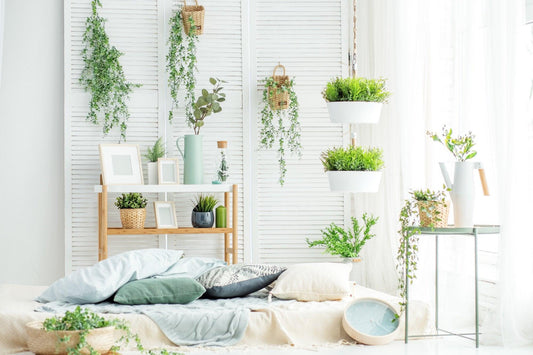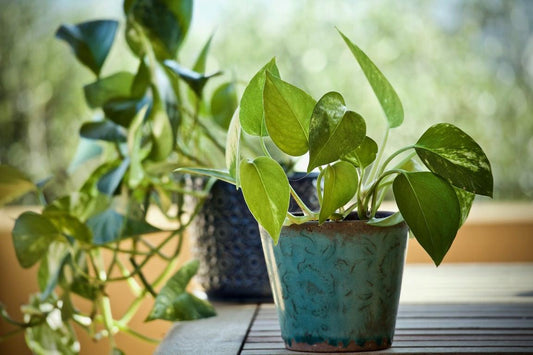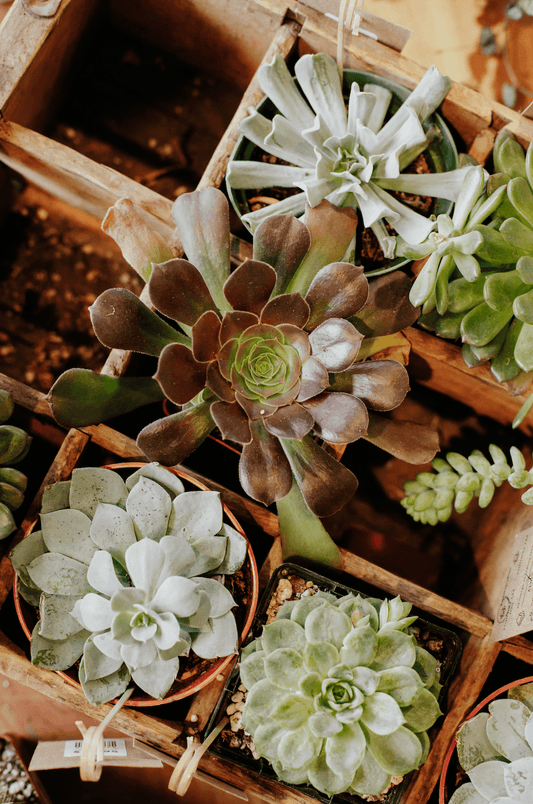CALATHEA
How to Care for the CALATHEA Plant
Overview
Calathea are some of the most beautiful plants in the world. Characterised by oblong-shaped foliage that come in different shades of green and sometimes burgundy undersides, the eye-catching geometric patterns on the leaves make them a choice selection for any plant enthusiast looking to liven up an indoor space.
Native to the South Americas, these plants have a tendency to be a bit fussy indoors, hence their reputation as the “drama queens” of the plant community. They thrive in conditions that mimic that of their natural habitat: medium to bright indirect light, moist soil, and high humidity. Once these conditions are met and successfully maintained, they will thrive and grow quickly. Because of where they come from, Caltheas prefer distilled, or rain water as indoor plants to live their best lives.


Profile
Calatheas tend to grow at a moderately fast rate, but do not spread out over the pots, so pruning won’t be a chore. When grown indoors, they reach a maximum average of two feet in height. Blooming only occurs in certain species, such as the Eternal Flame Plant (Calathea crocata), which produces beautiful orange flowers.
Calatheas are a genus under the Marantaceae family. It’s often mistaken for the Maranta due to several similar properties. Their most notable shared trait is the daily movement of plant leaves known as nyctinasty. Their leaves fold up slightly during nighttime or lower light situations, and unfurl during the daytime, following the morning sun in order to maximise light absorption. This is made possible by the pulvinus, a small joint between the stem and the leaf that facilitates growth and independent movement.




Low light
Keep your Calatheas healthy by mimicking the conditions of their natural environment. They do best in medium to bright indirect sunlight, but will tolerate lower light conditions. This is because their natural habitats are the floors of jungles and forests, receiving light that filters through the tops of the trees. Never put them under direct sunlight as the leaves will burn and brown.

Occasional
As they are tropical plants, Calatheas are averse to the cold. They do best in temperatures that range from 65-85°F. Anything below and above this range may cause damage. They also prefer higher levels of humidity, so place nearby a humidifier, or in your bathroom if the lighting is appropriate.
Moisture is key to helping your Calathea survive, so opt for a well-draining soil mix. Make sure to use filtered water when the top 25% of the soil is dry, taking great care not to water too frequently, or let the pot sit in water, as this can possibly drown your plant. Water until liquid flows through the drainage hole at the bottom of the pot, and avoid leaving your plants sitting in standing water.

Easy breezy
Calatheas don’t like being disturbed unnecessarily, so dividing during a necessary repotting is the best way to minimise disturbance. Dividing is a great way not just to increase the number of plants you have, but to maintain the size of the parent plant, as doing so will prevent it from growing too large. Be very careful when dividing them at the roots, as any breakage will increase the chance of shock to the plant. Look for the natural divisions at the root ball and trim any diseased roots before repotting

Pet Friendly
You needn’t worry about keeping Calatheas in households with pets, as they are safe for both animals and humans.
FREQUENTLY ASKED QUESTIONS (FAQs)
on CALATHEAS
Why are the offsprings of my Calathea not growing properly?
This could be because they were not divided properly. When dividing, make sure each division has a portion of both roots and plants, as leaf cuttings alone will result in failed offspring.
Why is my Calalthea not praying?
Do you ever wonder why your Calathea's leaves are not folding together? This can mean a lot of things. Have you checked its lighting needs? Is it not getting enough sun, or getting too much sun? It can also mean that the plant is too wet, or not enough moisture is in its system. The key to thriving Calatheas is the right balance of everything. Learn how to practice anticipating your Calatheas' needs, and it's sure to grow even more lovely leaves.




